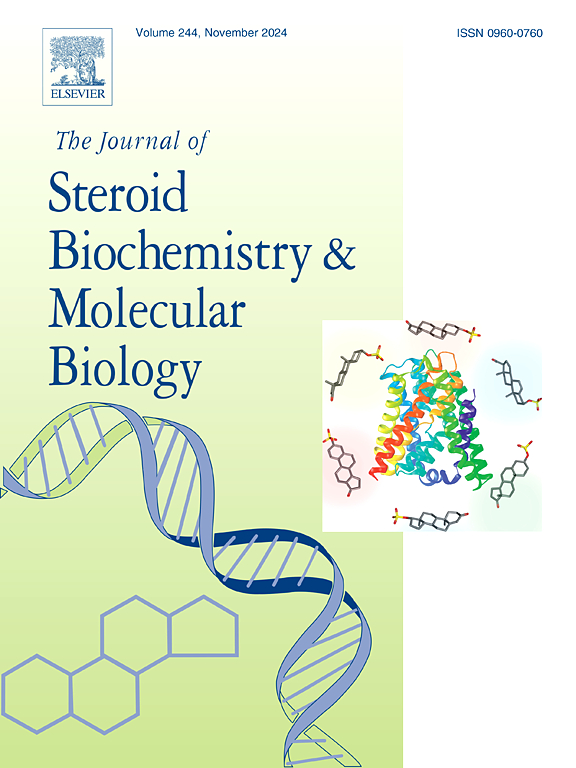“胆固醇生物合成和代谢在史密斯-莱姆利-奥皮茨综合征(SLOS)患者中引起医疗复杂性的作用”。
IF 2.5
2区 生物学
Q3 BIOCHEMISTRY & MOLECULAR BIOLOGY
Journal of Steroid Biochemistry and Molecular Biology
Pub Date : 2025-07-01
DOI:10.1016/j.jsbmb.2025.106822
引用次数: 0
摘要
Smith-Lemli-Opitz综合征(SLOS)是一种常染色体隐性遗传疾病,与复杂的解剖异常相关,伴有医学、发育和行为方面的挑战。这是30多年前发现的第一个由复杂的胆固醇生物合成途径中的错误引起的人类疾病。这篇综述将涵盖SLOS患者的临床和发育表型,并了解胆固醇缺乏、胆固醇前体7-和8-脱氢胆固醇(7- dhc和8-DHC)的积累以及这些前体氧化成有毒的氧甾醇是如何导致这种复杂表型的。sls患者的严重程度有很大的差别。受影响最严重的婴儿可能因致命的先天性异常而流产或在新生儿期死亡。最轻微的受影响的患者除了2-3个脚趾并指外,可能没有什么解剖异常,但仍然表现出自闭症谱系中的认知和行为挑战。审查还将包括在照顾慢活症患者时建议的医疗评价和干预措施。这种毁灭性的疾病无法治愈,但某些干预措施可以改善生活质量,并稳定这些复杂患者的进行性问题。本文章由计算机程序翻译,如有差异,请以英文原文为准。
The role of cholesterol biosynthesis and metabolism causing medical complexity in patients with Smith-Lemli-Opitz Syndrome (SLOS)
Smith-Lemli-Opitz syndrome (SLOS) is an autosomal recessive genetic disorder associated with complex anatomic abnormalities, accompanied by medical, developmental and behavioral challenges. It was the first human disorder identified to be caused by an error in the complex cholesterol biosynthetic pathway, more than thirty years ago. This review will cover the clinical and developmental phenotype of patients with SLOS, and the understanding of how cholesterol deficiency, accumulation of the cholesterol precursors 7- and 8-dehydrocholesterol (7-DHC and 8-DHC), and the oxidation of these precursors into toxic oxysterols, are now known to cause this complex phenotype. There is a wide range of severity in patients with SLOS. The most severely affected babies may be miscarried or die in the newborn period due to lethal congenital anomalies. The most mildly impacted patients may show few anatomic abnormalities other than 2–3 toe syndactyly, but still display cognitive and behavioral challenges along the autism spectrum. The review will also cover the medical evaluation and interventions which are recommended in caring for patients with SLOS. There is no cure for this devastating disease, but certain interventions can lead to an improved quality of life, and stabilization of progressive problems for these complex patients.
求助全文
通过发布文献求助,成功后即可免费获取论文全文。
去求助
来源期刊
CiteScore
8.60
自引率
2.40%
发文量
113
审稿时长
46 days
期刊介绍:
The Journal of Steroid Biochemistry and Molecular Biology is devoted to new experimental and theoretical developments in areas related to steroids including vitamin D, lipids and their metabolomics. The Journal publishes a variety of contributions, including original articles, general and focused reviews, and rapid communications (brief articles of particular interest and clear novelty). Selected cutting-edge topics will be addressed in Special Issues managed by Guest Editors. Special Issues will contain both commissioned reviews and original research papers to provide comprehensive coverage of specific topics, and all submissions will undergo rigorous peer-review prior to publication.

 求助内容:
求助内容: 应助结果提醒方式:
应助结果提醒方式:


